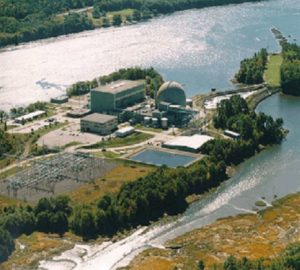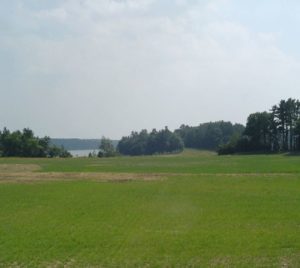Nuclear Energy Activist Toolkit #19
Four nuclear power reactors (Crystal River 3 in Florida, Kewaunee in Wisconsin, and San Onofre Units 2 and 3 in California) permanently shut down this year and the owner of another reactor (Vermont Yankee in Vermont) announced it would permanently shut down next year.
Decommissioning is the next step in the life cycle of nuclear power plants. The NRC recently outlined the decommissioning process and applicable regulations to Senator Leahy. The regulations permit three decommissioning options:
- decontamination (DECON) where structures and components contaminated with radioactivity are either cleaned or removed and shipped to a licensed radioactive dump site,
- safe storage (SAFSTOR) where the facility in placed in nuclear limbo for up to six decades for later decontamination, and
- entombment (ENTOMB) where the facility is basically covered over in cement and left forever.
The ENTOMB option was available for some of the early, small reactors that did not operate at high power levels or for extended periods so as to develop much of a radioactive footprint. It is not available for today’s large nuclear power reactors.
Steps in the decommissioning process include a Post Shutdown Decommissioning Activities Report (PSDAR), a Final Status Survey Report (FSSR), and a License Termination Plan (LTP). The PSDAR is basically a roadmap outlining the tasks to be taken along with their schedule and estimated costs. The FSSR is an inventory of the radioactively decontaminated pieces of the plant that require special handling. And the LTP describes how the site will be used when all the decommissioning activities are completed. The PSDAR, FSSR, and LTP are submitted by owners to the NRC and become publicly available.
The DECON option has been exercised. The pictures below show the northwestern Massachusetts site of the Yankee Rowe nuclear plant. This reactor operated from 1963 to 1991 and has been dismantled and removed as illustrated by the picture on the right.
The pictures below show the same before and after views of the site near Wiscasset, Maine. Maine Yankee operated from 1973 to 1996 and has also been dismantled and removed.
Each year, the NRC staff updates its commissioners on the status of decommissioning activities at U.S. nuclear facilities. This annual status report covers other NRC-licensed sites like research reactors and nuclear fuel cycle facilities in addition to nuclear power reactors.
Decommissioning a nuclear power reactor costs a lot, and not just for all the new acronyms. Federal regulations require owners to set aside money during nuclear plant operations to ensure funding is available after the reactor stops generating electricity, and revenue. The NRC staff recently reviewed the decommissioning funds for each U.S. nuclear power reactor. A table accompanying the NRC’s report reveals the large sums of money required for decommissioning. For example, decommissioning the Clinton plant in Illinois was estimated to cost over $960 million while decommissioning the two reactors at the Diablo Canyon nuclear plant in California was estimated at more than $2.1 billion.
Bottom Line
Humorist Will Rogers said that the only two things certain in life were death and taxes. Rogers died in 1935, before the first sustain nuclear chain reaction occurred and long before nuclear power reactors were built. Otherwise, Rogers may have amended his list to include nuclear power reactor decommissioning. For while it may not be certain when a nuclear power reactor ceases operation and when it gets decommissioned, it is certain that day will come.
The UCS Nuclear Energy Activist Toolkit (NEAT) is a series of post intended to help citizens understand nuclear technology and the Nuclear Regulatory Commission’s processes for overseeing nuclear plant safety.




